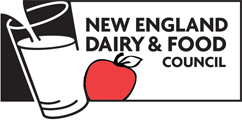Lifting weights is hard. It’s taxing on your muscles and requires determination to push through the pain. Yet lifting weights is not a one-and-done effort: To reap the benefits, you need to work your muscles frequently.
The same is true for eating after exercise. But what should you eat, when, and why?
In this blog post, you’ll learn about:
- Why eating after lifting weights is important.
- Why dietary protein and carbohydrates are needed.
- Why dairy products are a must-have.
- What to eat for optimal recovery.
Why Should I Eat After Lifting Weights?
Whether it’s holding a plank or lunging with weights, your muscles are being stressed. Weight-bearing exercise results in small muscle tears that need to be repaired. Muscles can be in recovery mode for up to 48 hours after a workout ends, yet the optimal timeframe for refueling with foods and beverages is much shorter.
Many organizations, including the American College of Sports Medicine and Academy of Nutrition and Dietetics, recommend consuming a balanced snack or meal within two hours of finishing a workout. However, to maximize muscle recovery plan to have that snack or meal immediately (e.g., within 45 minutes).
Why Protein and Carbohydrates Matter for Recovery
For muscles to recover, a lot needs to happen. For instance:
- Dietary protein needs to be broken down into its amino acid building blocks (the digestive system will do this).
- The amino acids are then adsorbed from the digestive tract and into the bloodstream.
- Through the bloodstream, amino acids are delivered to the muscles.
Once amino acids are present, muscle recovery is stimulated and repair begins.
When eating a carbohydrate-rich banana after exercising, the brain is stimulated and insulin is released. The presence of insulin in the bloodstream helps slow down the rate of muscle breakdown.
Muscles also have their own energy stores called glycogen, or stored sugar, which are drained during exercise. Part of recovery is replenishing glycogen.
Including carbohydrates in the recovery eating plan will lessen the breakdown of muscle and replenish glycogen stores.
Nutrition Research Recommends Dairy in Recovery Plans
Research on recovery nutrition for resistance exercise has focused on dairy products due to its carbohydrate and unique protein profile.
Dairy protein consists of whey and casein. Whey is a fast-acting protein that can be absorbed into the bloodstream and arrive at the muscles very quickly. Whey is fast fuel for the muscles. Casein is a slow-acting protein that takes longer to reach the muscles, but is helpful for recovery once the whey has been used up.
Another factor is the amino acid leucine. Leucine is one of three branched-chain amino acids (BCAAs) that make up one-third of the protein found in muscle. Thus, BCAAs are the preferred fuel for muscles and dairy contains high levels of leucine.
Research shows that in comparison to plant-based alternatives, drinking cow’s milk after a workout results in greater muscle gains and promotes better recovery. It’s no accident that chocolate milk is the official recovery beverage of Team USA Swimming.
What to Eat: Optimizing Your Recovery
Depending on the athlete’s gender, body weight, age, exercise goals, eating preferences, and health, the recovery meal will be different. However, combining a protein with a carbohydrate should be the basis of a nutrition recovery plan (see table 1 below).
Choose a high-quality protein: Aim for 15-25 grams of protein. This amount will flood the muscles and provide ample protein for recovery. Anything beyond this will be stored as body fat or be removed from the body. Good choices include dairy, lean meats, eggs, and nuts and butters.
Choose a carbohydrate: Aim for 40-60 grams of carbohydrates. Good choices include dairy, whole grains, fruits, starchy vegetables, and beans and legumes.
Since fat takes longer to digest, opt for lower-fat items to help maximize fuel delivery to the muscles.
| Nutrition Item | Protein (grams) | Carbohydrate (grams) | |
|---|---|---|---|
| 2 cups (16 ounces) of low-fat chocolate milk | 16 | 56 | |
| 3/4 cup of low-fat Greek yogurt, a small banana, and a drizzle of honey | 18 | 37 | |
| Berry and peanut butter smoothie: 1 cup of frozen berries, 1 tbsp. of peanut butter, 1/2 cup (4 ounces) of low-fat milk, and 3/4 cup of low-fat Greek yogurt | 26 | 39 |
If you prefer protein powders, make sure you’re choosing a product that has been verified. Check out the NSF Certified for Sport database, or look for the blue “NSF Certified” logo on your favorite products.
Updated March 28, 2017



